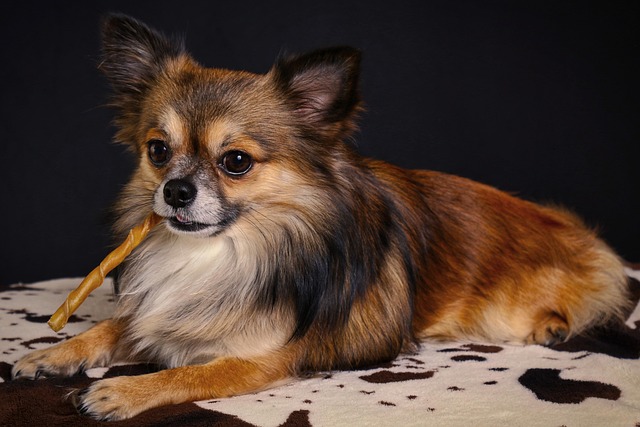
How can I tell if my dog's heatstroke is serious
Let’s be real: It’s a sticky August morning in Los Angeles, and you took your 2-year-old Golden Retriever, Max, for a walk a little later than usual
If you’re a new dog parent in the US—maybe you’re sitting on your Ohio apartment floor, running your fingers through your 1-year-old Golden Retriever’s fur and noticing tiny white flakes sticking to your sweatpants, or you’ve hesitated to grab a brush because you’re scared you’ll irritate your rescue Pug’s dry, flaky back—you’ve probably asked: Is brushing safe? Will it make the flakiness worse? The short answer is yes, you should brush a dog with flaky skin—but only if you do it the right way. Brushing done gently can actually help soothe their skin, not hurt it. Let’s break this down simply, with real tips and no confusing jargon.
First, let’s get the science straight: Dog flaky skin (often called “dandruff”) usually happens when their skin is dry or their coat isn’t distributing natural oils evenly. Their skin produces oils that keep fur soft and skin hydrated, but if those oils get stuck in matted fur or aren’t spread around, the skin dries out and sheds dead cells (those white flakes). Brushing helps by loosening dead skin cells, untangling small mats that trap oils, and spreading those natural oils from their skin to the ends of their fur—like how you might use a hairbrush to distribute conditioner. The wrong brush (like a stiff bristle one) or rough brushing, though, can scratch their already sensitive skin and make flakiness worse. Take Sarah, a first-time owner in Texas: She used a wire brush on her Cocker Spaniel’s flaky skin, and he started yelping—turns out the brush was too harsh. Switching to a soft bristle brush and going slow fixed the problem.

Here’s how to brush a dog with flaky skin safely, step by step: Start with the right tool—pick a soft bristle brush or a rubber grooming mitt (they’re gentle on sensitive skin). Avoid wire brushes or de-shedding tools unless your vet recommends them—they’re too rough for flaky skin. Before brushing, give your dog a quick once-over: If their skin has red spots or open scratches, skip brushing and call your vet (those could be signs of an infection). When you start brushing, go in the direction their fur grows—use light, gentle strokes, focusing on areas with the most flakes (like their back or shoulders). Stop every 30 seconds to give them a tiny freeze-dried salmon treat; positive reinforcement makes them sit still and associate brushing with something good. Never press hard or yank at mats—if you hit a tangle, hold the fur above the mat (so you don’t pull their skin) and tease it apart slowly. If they wiggle or pull away, pause—never scold them. Punishment goes against US animal welfare norms and will make them fear brushing forever. Aim to brush 2-3 times a week—too much can dry out their skin more.
Now, let’s tie in rules and habits that matter. Every US state requires core vaccines (distemper, parvovirus)—while brushing doesn’t link to vaccines, regular vet visits (mandatory for shot updates) are a good time to ask about your dog’s flaky skin. Skipping these visits could mean missing underlying issues (like allergies or thyroid problems), and in states like California or New York, neglecting your dog’s comfort (like untreated dry skin) might lead to welfare checks. When you take your dog for walks (even after brushing), always clean up their poop—cities from Seattle to Boston have fines up to $300 for leaving waste, and bacteria in poop can irritate their skin if they roll in it. If you live in an apartment, vacuum up the brushed-off flakes right away—they can float through vents and bother neighbors with allergies. And if you bathe your dog, use a mild, moisturizing dog shampoo (never human shampoo!)—over-bathing or using harsh products is a common cause of flaky skin in apartment dogs.
Brushing a dog with flaky skin isn’t about perfection—it’s about gentleness and consistency. With the right brush, slow strokes, and follow-through on local rules, you’ll help reduce flakes and keep your pup’s skin feeling soft. Before you know it, they’ll be leaning into the brush instead of pulling away.

Let’s be real: It’s a sticky August morning in Los Angeles, and you took your 2-year-old Golden Retriever, Max, for a walk a little later than usual

You're enjoying a summer afternoon at the park when you notice your dog has stopped panting and appears disoriented - their gums are bright red

Let’s paint the picture: You’re in your Denver apartment, watching your 4-year-old Boston Terrier, Ruby, plop down mid-play session with her favorite toy

Many dog owners notice their pets nails seem shorter after regular walks,but how much does this daily activity actually help?The answer depends on where you walk—concrete sidewalks or asphalt streets gently file nails as a dog's paws hit the ground

Most dog owners notice their pup scooting across the carpet at some point, but few connect it to impacted anal glands. These small sacs near a dog’s rectum secrete a scent for marking territory

Most vets agree that regular dog teeth cleaning is key to avoiding painful dental issues later. For healthy adult dogs, a professional cleaning at the vet’s office every 12 to 18 months usually works well.